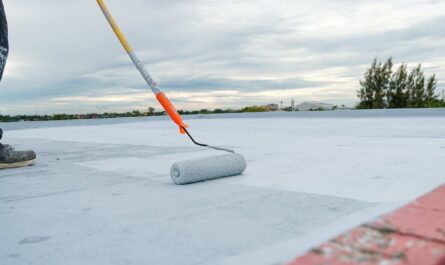Composite Adhesive
Composite adhesives are bonding materials used to join composite materials like carbon fiber, fiberglass and aramid fiber to themselves and other materials. They are engineered to bond multi-material assemblies and provide strength without adding weight. Composite adhesives have gained popularity in industries like aerospace, automotive and wind energy due to their unique properties.
Properties and Performance of Composite Adhesive Industry
composite adhesive offer durability, strength and lightweight properties that are ideally suited for applications with demanding performance requirements. They are engineered to withstand extreme environmental conditions like heat, cold, moisture and chemicals. Compared to mechanical fastening methods, bonded assemblies using composite adhesives can be stronger and more rigid. Additionally, adhesives help distribute stresses evenly across bonded areas and eliminate stress concentrations around fasteners.
Several properties make composite adhesives useful for manufactured products:
– Durability: Properly cured composite adhesives form durable, long-lasting bonds resistant to corrosion, vibration and impact damage. This longevity reduces maintenance costs.
– High Strength: Advanced composite adhesives can match or exceed the strength of the materials they bond. They reinforce bonded assemblies to allow for lighter designs without compromising durability.
– Low Weight: Composite bonded assemblies weigh less than mechanically fastened designs. The lightweight properties allow for weight savings which improve performance metrics like fuel efficiency.
– Gap Filling: Composite adhesives can fill voids and irregularities in substrates, bonding surfaces that are difficult to join through other methods. This increases design flexibility.
– Electrical Insulation: Most composites adhesives are non-conductive, preventing galvanic corrosion issues in multi-material designs prone to electrical conductivity.
Applications of Composite Adhesives in Key Industries
Automotive
In the automotive industry, weight savings translate directly to improved fuel economy which is a key goal of manufacturers. Composite adhesives allow for mass reduction through their use in bonding:
– Body panels: Sheet molding compounds and carbon/glass fiber reinforced plastic body parts.
– Underbody shields: Composite parts bond underbody components for corrosion protection.
– Drive shafts: Composite materials and adhesives are used to manufacture stronger, lighter drive shafts.
Aerospace
Weight savings through composites and adhesives enable increased payloads and better performance metrics for aircraft. Major applications include:
– Wing assemblies: Entire wings are now composite structures bonded with adhesives.
– Fuselage panels: Carbon fiber skins are co-cured to aluminum frames.
– Interior components: Lightweight modules use bonded fiberglass/aramid honeycomb panels.
Wind Energy
Large composite wind turbine blades require durable, high-performance adhesives to manufacture and operate reliably:
– Blade construction: Blade shells are structurally bonded to spars and trailing edge components.
– Flange joining: Adhesives connect blade sections into complete assemblies over 100 meters long.
– Repair: Damage is repaired through composite patching adhered with advanced structural adhesives.
Growth Factors for the Global Composite Adhesive Market
Several drivers are supporting strong growth in the global composite adhesive market valued at $XX billion in 2020 according to Allied Market Research. Annual gains of around 7% are expected as adoption increases across core industries.
Regulatory Factors
Strict fuel economy and emissions standards are mandating mass reduction in automotive engineering. Composite adhesive solutions allow manufacturers to meet compliance targets cost effectively. Similar performance-based regulations spur their use in aviation and renewable energy.
Material Innovation
Ongoing developments are expanding the performance ranges of composite adhesives. New formulations improve durability, water resistance and high/low temperature bonding capabilities. This enables composite integration into more rigorous applications and environments.
Market Trends
Widespread composite usage, especially in automotive mass production, has normalized adhesive joining methods. Additionally, demand rises as wind and solar become mainstream renewable sources. The collective trends are catalyzing broader composite adhesive implementation globally.
Regional Market Factors
Asia Pacific’s large automotive manufacturing base and expanding wind power sector drive the region’s rapid market growth. In North America and Europe, aerospace remains a core industry applying advanced adhesives. Regulations also stimulate innovation and demand for sustainable, low carbon technologies.
The widespread enabling properties of composite adhesives are catalyzing their increased use in engineered products across industries. Driven by performance demands, material innovations and global market expansion trends, the adoption of bonded composite joining methods is projected to continually grow. Composite adhesives establish new standards for lightweight, durable manufacturing worldwide.
*Note:
1. Source: Coherent Market Insights, Public sources, Desk research
2. We have leveraged AI tools to mine information and compile it



